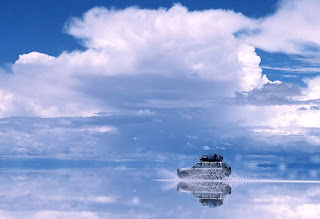The Cordillera Blanca: a range of the Andes filling the southern half Perú. A pattern, of high, continuous peaks that soon breaks as it opens into a long, deep gorge of a valley that dwarfs the mountains that contain it. A treasure box, filled with secret lagoons the color of gem stones and tall patches of mountain grass with sparkles of red and pink. A place of real power, for the sense of true appreciation of beauty and nature it provokes. A challenge, to battle altitude, cold, and fatigue for those few moments that are so startlingly wonderful that their mere memory makes your chest hurt with the overflow of love, joy, and beauty. The site of a journey, of four days and three nights, that awoke a spirit of appreciation and wonder, and peace.
The
Santa Cruz Trek, starting in Vaqueria and finishing in the small mountain farming village of Cashapampa, has as its highest pass Punta Union, at 4750m. Myself, three roommates, a traveller from England, and one from Norway began our trek with a 5 hour van-ride that started in the city of
Huaraz.
We soon progressed to skinny mountain roads that are maybe better labeled as "paths", still traveling by van. Radio service cut in and out and we wound around the mountains, leaving us many times with only static for background music. The buzz of the static was often drowned out by our chatter - excited for an adventure and making the acquaintance of fellow groups members, we started the journey with what would become a staple of our group: good fellowship.
The hike of the first day was short, although eventful. We began by passing through some mountain villages. The people of this area live in basically the same manner as they have lived for hundreds of years, farming for subsistence and surviving with only the basic necessities. The houses are startlingly simple structures. Very small, they have stone walls of one or two floors. Clothes swing in the wind as they hang to dry. A few of the houses had large stone ovens in back. While I can go to a restaurant and pay a hefty amount for a fire-roasted pizza, the people of this region still use their stoves for function, not luxury.
The people still wear largely traditional clothing, especially the women, who still dress in multiple layered long skirts, long sleeves covered by a knitted poncho, and a large bowler hat. The younger generations mix in modern pieces, but their clothing is still dominated by the traditional outfit.
The kids of these villages put us to shame - while we were struggling to adjust to the altitude, fighting to pull oxygen from the mountain air, one boy told us that he walks the same path we just completed twice every day in order to travel to and from school.
We went on the trek in the latter half of October, anxiously close to the start of the rainy season. The weather certainly teased us: two hours into our first day we received an afternoon shower followed by a spitting rain. It prompted a real fear that all four days of our trek would become a drudge through rain and mud. But soon the rain slowed enough to become unnoticeable and stayed away for the rest of the trek. We arrived at our first day camp muddy and wet, but in good spirits for having completed our first day.

Our nights were cold, but not unbearable with hat, gloves, coat, pants, and a double layered sleeping bag. We became very skilled at shaking frost off the tents in the morning.
The second day was the day for
Punta Union, the highest point of our trek. This day was the most challenging one: fighting rising cold, fatigue, and thin air, we wound through a valley and started an ascent of five hours to reach the top of the pass. We rounded rocks and streams, wedging our way up the path as it became increasingly more slippery, until we reached the natural rock steps that led up to the point. Although for some members of the group the climb required much more time than for others, we all completed the pass, reaching the famed
Punta Union sign in the late afternoon.

From there, we began a long descent down the point and into a large valley that lasted for the last two days of our trip.

After the fight to finish the pass, these days of our trip were just fun - great company, physical exercise, and the beautiful nature that surrounded us.

On the third day we reached a wide valley. For the first time all of us could walk side by side, sharing the experience together. It felt as though our group, marching forward together, could conquer anything. Our song of choice as we passed through the valley was the Beatles "
Here Comes the Sun" although we only knew the words to the chorus. We formed a line as we crossed the valley, which made me feel like the Monkees,
coming down the street.

The indigenous people of the region have a practice of leaving small piles of stones as a tribute to Mother Earth. Throughout our path, but especially at the most beautiful and secluded parts, we would come across these stacks of rocks (the small rock stack pictured below on the left side of the picture). Of varying shapes and sizes, the planned, organized piles were very poignant in contrast to the rugged, messy rocks that littered the path. The Santa Cruz, an absolutely break taking trek, is the first stone in my tribute pile for Mother Earth. Although just one stone, it holds the challenge, the beauty, the people, and the spirit of the
Cordillera Blanca.






























